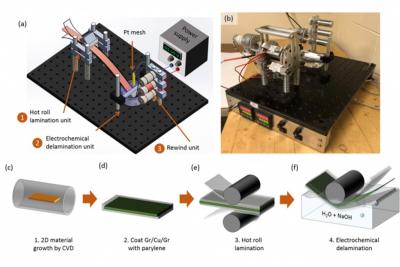Researchers design a novel method for construction of van der Waals heterostructures using a dual-function polymeric film
A team of researchers has found a novel method for the construction of high-quality van der Waals (vdW) heterostructures, that are vital for many scientific studies and technological applications of layered materials. The work is a collaboration between the laboratory of Davood Shahrjerdi, a professor of Electrical and Computer Engineering at the NYU Tandon School of Engineering and a faculty member of NYU WIRELESS; a group led by Javad Shabani at the Center for Quantum Phenomena, New York University; and Kenji Watanabe and Takashi Taniguchi of National Institute for Materials Science, Japan.

A crucial step for building vdW graphene heterostructures is the production of large monolayer graphene flakes on a substrate, a process called mechanical exfoliation. The process then involves transferring the graphene flakes onto a target location for the assembly of the vdW heterostructure. An optimal substrate would therefore make it possible to efficiently and consistently exfoliate large flakes of monolayer graphene and subsequently release them on-demand for constructing a vdW heterostructure.








